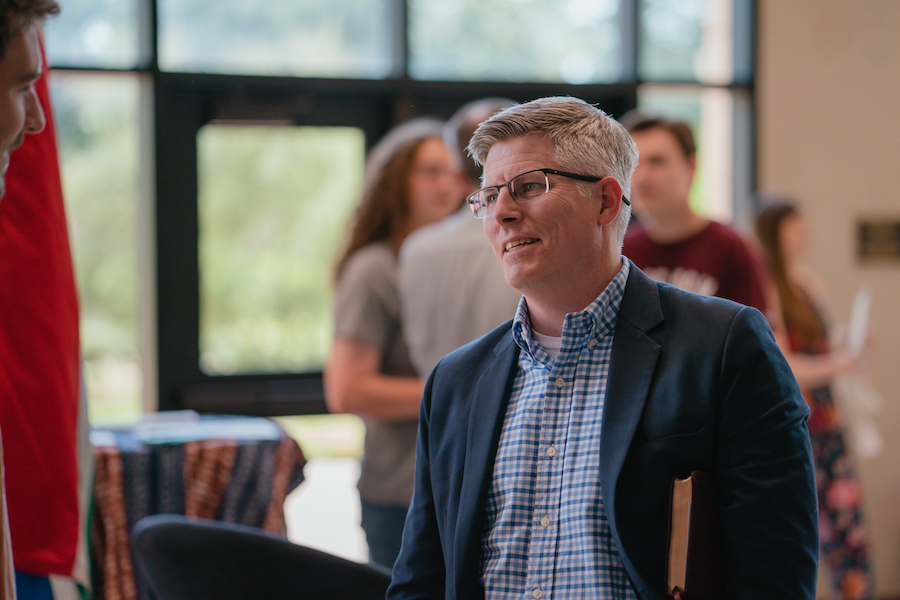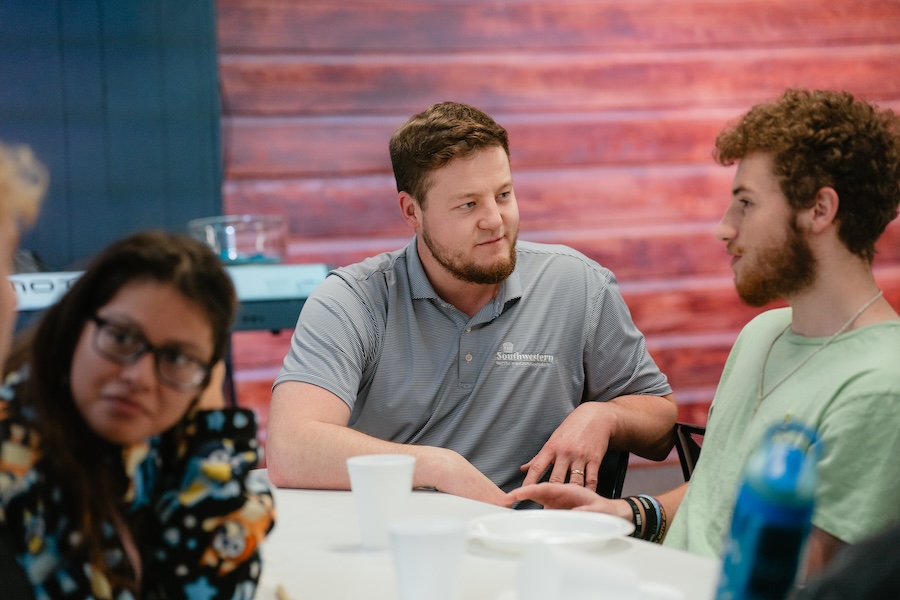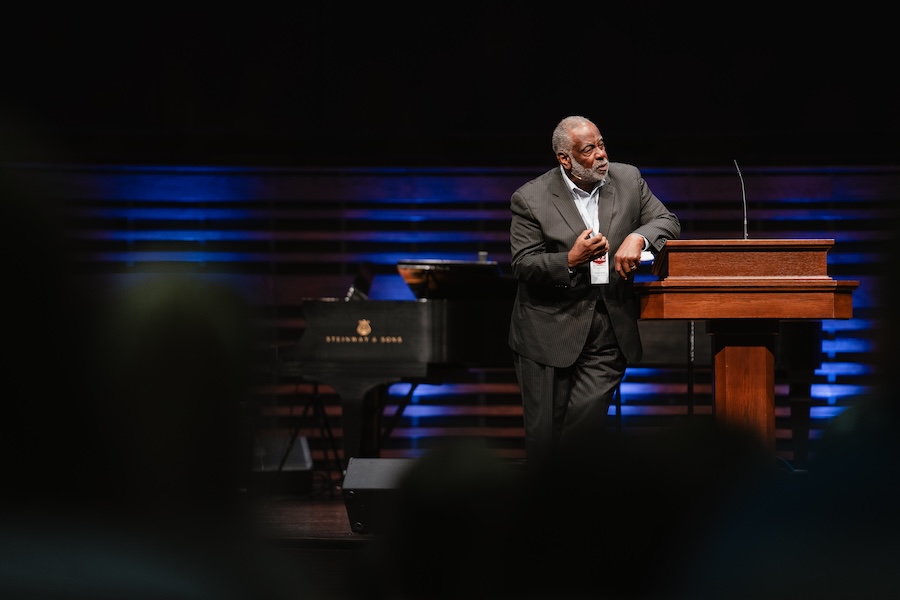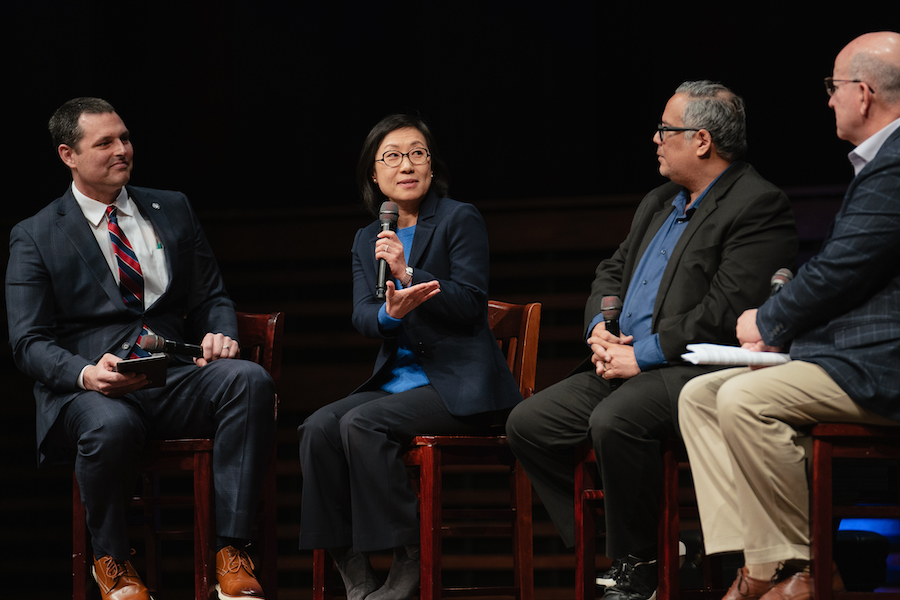Mardi Gras proves to be fertile ground for evangelism
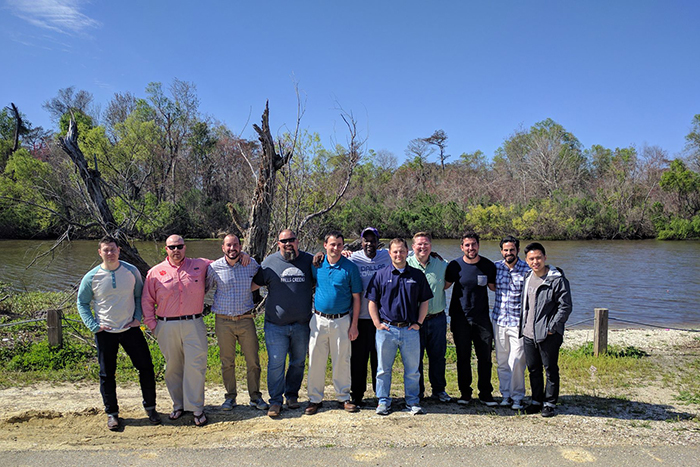
Mardi Gras is a safe place for sinners, says Master of Divinity student Calvin Summers, “because they can be rude, they can be obnoxious, they can be above the law, and no one says anything. The drawback to that is, at the end of the day, they have to go back to reality and take the mask off. And that’s the sad part. [After the two-week celebration,] two things happen: people become broken or people become even more hardened, because they realize that the party has to end.”
Bearing this truth in mind, a team of Southwestern evangelists went to Mardi Gras in New Orleans, La., Feb. 23-26, in order to share the Gospel with unbelievers in the area. The team of evangelists, led by Instructor of Evangelism Brandon Kiesling, comprised the 10 students from Kiesling’s “Event Evangelism” class—among them Calvin Summers. This provided the students the opportunity to participate in an “evangelistic event”—in this case, intentional evangelism among the revelry and carousing of this annual tradition.
The first fruits of the trip, however, were reaped before the team even arrived in New Orleans. At their first rest stop at Bucc-ee’s, one of the evangelists led the bathroom attendant to Christ.
At another gas station several hours later, Summers spoke to a man who asked where they were traveling. When Summers told him they were going to Mardi Gras, the man said that “is a great place to have fun.” Summers then clarified, “We’re going there to share the Gospel.” This opened the door for a spiritual discussion and a Gospel presentation via the Romans Road, and the man ultimately professed faith in Christ.
“One thing I loved about the students is that they didn’t wait to get on the mission field; the mission field was ‘as we go,’” Kiesling reflects. “The students were just very eager to share the Gospel wherever we went. So that’s always a fun thing to watch as a professor; to watch the students just go for it.”
When they arrived in New Orleans, the team quickly found that the area is, in Kiesling’s words, “a melting pot of spirituality.” In the midst of their personal conversations, the team met people from numerous backgrounds—Hindu, Islam, Jehovah’s Witness, Catholics, Episcopalians, and even Satan-worshiping atheists. “So it’s a great training ground for students to engage people of different faiths and backgrounds,” Kiesling says. “And the students whom I took were very appreciative of that fact, because it gave them a great opportunity to engage people where they are and confront them with the reality of the Gospel.”
The most fruitful conversations took place several blocks away from the actual Mardi Gras celebration. Not only was it quieter there, but some people in that area, having wandered away from the festivities, were beginning to consider the reality that what they were doing does not bring real, lasting joy. Such a context provided ample opportunity for spiritual conversations.
At Kiesling’s direction, many of these conversations began simply with, “Hey, we’re religious studies students. We’re trying to study different people and backgrounds. Can we talk to you about your spiritual background?” While engaging people in this way, Kiesling personally met an atheist couple who claimed to worship Satan (interestingly enough, Kiesling says, these people were “very, very nice”).
After learning this about them, Kiesling said, “Tell me how you got there. How did you come to this place where you don’t believe in God but you worship Satan?”
“They told me that, through a series of things, ultimately, it got to the point where they didn’t like what the Bible said about homosexuality, abortion, and all these other things, so they chose to not believe in the Bible or God because of that,” Kiesling recalls. “But we engaged them from about 25 minutes, and at the end of the conversation, after I shared the Gospel, I simply asked, ‘Can I ask you a question? Was anything that I said offensive, or do you feel that I pushed it on you or anything?’”
Kiesling was simply curious to hear an atheist critique of his evangelism. The woman replied, “No. As a matter of fact, you made me think about some things. I’ve always thought that I may be wrong about what I believe.”
Though the woman’s husband did not appreciate this statement, Kiesling nevertheless realized that their conversation had actually meant something to her and that she would return home and consider it.
“They didn’t make a profession of faith,” Kiesling says, “but it was neat to see that she was genuine about that. So that was a pretty cool encounter that we had.”
The team’s efforts ultimately yielded six professions of faith. So, as Summers says, despite all the sinful activity usually associated with Mardi Gras, “I can truly say that, on our trip, we saw Jesus working in the French Quarter.”
